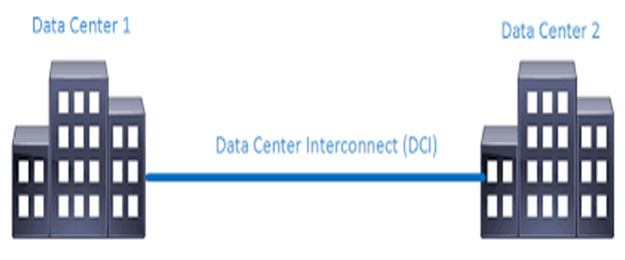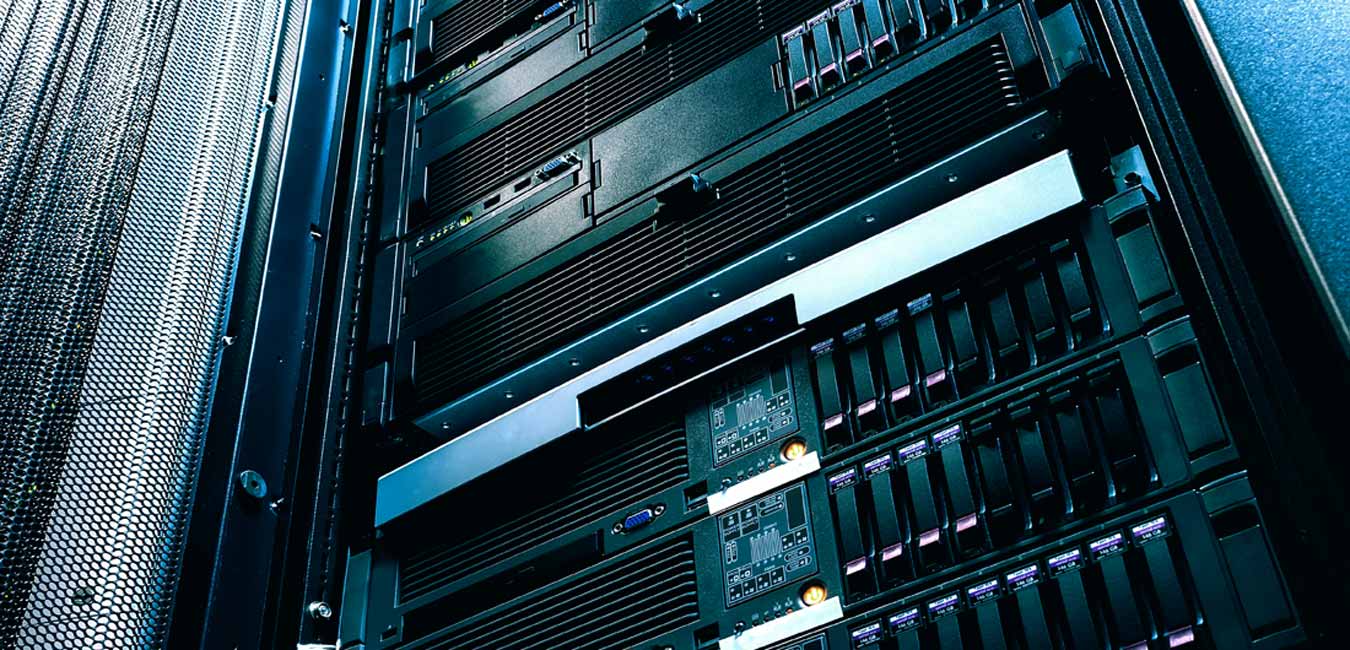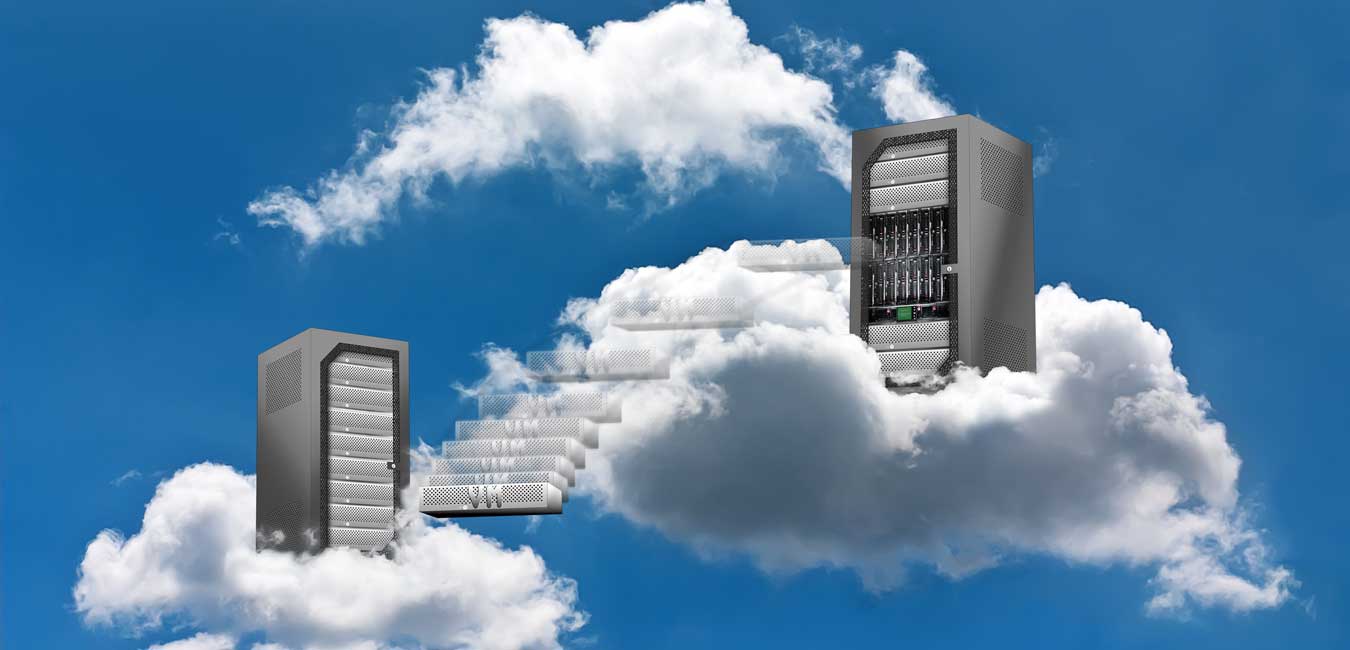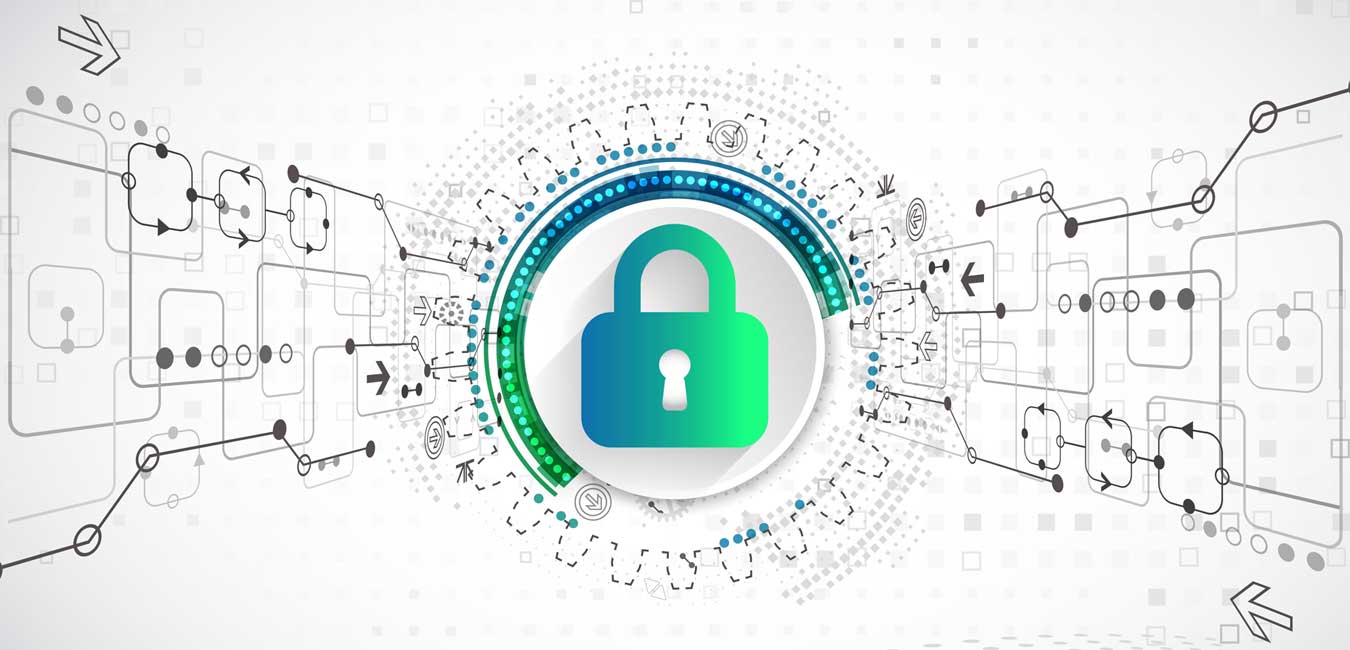How Data Center works (and how they’re changing)
A Data Center is usually a physical location in which enterprises store their data as well as other applications crucial to the functioning of their organization. Most often these Data Centers store a majority of the IT equipment – this includes routers, servers, networking switches, storage subsystems, firewalls, and any extraneous equipment which is employed. A Data Center typically also includes appropriate infrastructure which facilitates storage of this order; this often includes electrical switching, backup generators, ventilation and other cooling systems, uninterruptible power supplies, and more. This obviously translates into a physical space in which these provisions can be stored and which is also sufficiently secure.
But while Data Centers are often thought of as occupying only one physical location, in reality they can also be dispersed over several physical locations or be based on a cloud hosting service, in which case their physical location becomes all but negligible. Data Centers too, much like any technology, are going through constant innovation and development. As a result of this, there is no one rigid definition of what a Data Center is, no all-encompassing way to imagine what they are in theory and what they should look like on the ground.
A lot of businesses these days operate from multiple locations at the same time or have remote operations set up. To meet the needs of these businesses, their Data Centers will have to grow and learn with them – the reliance is not so much on physical locations anymore as it is on remotely accessible servers and cloud-based networks. Because the businesses themselves are distributed and ever-changing, the need of the hour is for Data Centers to be the same: scalable as well as open to movement.
And so, new key technologies are being developed to make sure that Data Centers can cater to the requirements of a digital enterprise. These technologies include –
- Public Clouds
- Hyper converged infrastructure
- GPU Computing
- Micro segmentation
- Non-volatile memory express
Public Clouds
Businesses have always had the option of building a Data Center of their own, to do which they could either use a managed service partner or a hosting vendor. While this shifted the ownership as well as the economic burden of running a Data Center entirely, it couldn’t have as much of a drastic effect to due to the time it took to manage these processes. With the rise of cloud-based Data Centers, businesses now have the option of having a virtual Data Center in the cloud without the waiting time or the inconvenience of having to physically reach a location.
Hyper converged infrastructure
What hyper converged infrastructure (HCI) does is simple: it takes out the effort involved in deploying appliances. Impressively, it does so without disrupting the already ongoing processes, beginning from the level of the servers, all the way to IT operations. This appliance provided by HCI is easy to deploy and is based on commodity hardware which can scale simply by adding more nodes. While early uses that HCI found revolved around desktop virtualization, recently it has grown to being helpful in other business applications involving databases as well as unified communications.
GPU Computing
While most computing has so far been done using Central Processing Units (CPUs), the expansive fields of machine learning and IoT have placed a new responsibility on Graphics Processing Units (GPUs). GPUs were originally used only to play graphics-intensive games, but are now being used for other purposes as well. They operate fundamentally differently from CPUs as they can process several different threads in tandem, and this makes them ideal for a new generation of Data Centers.
Micro segmentation
Micro segmentation is a method through which secure zones are created in a Data Center, curtailing any problems which may arise through any intrusive traffic which bypasses firewalls or. It is done primarily through and in software, so it doesn’t take long to implement. This happens because all the resources in one place can be isolated from each other in such a way that if a breach does happen, the damage is immediately mitigated. Micro segmentation is typically done in software, making it very agile.
Non-volatile memory express
The breakneck speed at which everything is getting digitized these days is a definitive indication that data needs to move faster as well! While older storage protocols like Advanced Technology Attachment (ATA) and the small computer system interface (SCSI) have been been impacting technology since time immemorial, a new technology called Non-volatile memory express (NVMe) is threatening their presence. As a storage protocol, NVMe can accelerate the rate at which information is transferred between solid state drives and any corresponding systems. In doing so, they greatly improve data transfer rates.
The future is here!
It is no secret that Data Centers are an essential part of the success of all businesses, regardless of their size or their industry. And this is only going to play a more and more important factor as time progresses. A radical technological shift is currently underway: it is bound to change the way a Data Center is conceptualized as well as actualized. What remains to be seen is which of these technologies will take center stage in the years to come.
Reliable and affordable connectivity to leverage your Data Center and Cloud investments
To know more about Sify’s Hyper Cloud Connected Data Centers – a Cloud Cover connects 45 Data Centers, 6 belonging to Sify and 39 other Data Centers, on a high-speed network…
Is your network infrastructure built for the future? Check today!
Any network infrastructure forms a section of a much larger IT infrastructure of any organization. Typically, a network infrastructure is likely to contain the following:
- Networking devices: such as LAN Cards, modems, cables, and routers
- Networking software: such as firewalls, device drivers, and security applications
- Networking services: such as DSL, satellite, and wireless services.
The continuous improvements in the technologies underlying the network infrastructure have made sure that as a business owner, you keep your network infrastructure up to date with the latest trends. It is easy to see why network infrastructure plays such an important role in enterprise management and functioning. Big businesses must keep thousands of devices connected to maintain consistency across the whole enterprise. Having a strong backbone helps. This is where a good network infrastructure comes in.
Considering the innovations and advancements in this sector, let’s look at some of the important trends which will help you find out if your infrastructure is up-to-date, and if not, where work is required:
Cloud networking systems
First and foremost, the reliance of businesses with cloud systems is increasing over the years. So, to start with, you should make sure that you are using a cloud-based system for your network infrastructure. With both public and private cloud options available, big enterprises are looking to shift their operations onto the cloud for fast, reliable, and secure operations. Hybrid clouds, which mix the good bits of both public and private cloud networking systems, have also emerged as viable network infrastructure solutions for enterprises.
Security as the topmost priority
Enterprises are giving utmost importance to security, owing to the fact that data breaches and hacks have been on the rise. With new innovations in tech come new ways of hacking networks. To protect against these breaches, organizations are now beyond the traditional firewalls and security software, and are turning up the heat on any malicious hacker looking to take down their network. Security has now become by far the biggest motivator in improving network security these days.
A secure network infrastructure requires you to have properly configured routers that can help protect against a DDoS (Distributed Denial of Service) attack. Further, a keen eye must be kept on the Operating systems as they form the foundation to any layered security. If privileges within an OS are jeopardized, the network security can be compromised at large.
An increased importance to analytics
For a long time, network analytics tools have been pulling data from the network, but it seems that the tides are changing. Enterprises now use their own big data analytics tools to generate information on trends and are pushing data from the network infrastructure. Companies like Cisco and Juniper are providing telemetry from their networking infrastructure to local analytics systems, with Juniper using OpenNTI to analyze it. Is your network infrastructure in-sync with your data analytics tools? If no – you must consider doing that, you don’t want to be left behind while the world progresses.
SD-WAN
Software-defined wide area networks continue to be a hot trend in network infrastructure innovations. Although the concept of SDN hasn’t been as successful as first imagined, SD-WAN seems to be the exception to the rule. Perhaps it is the only good thing that’s come out of the SDN concept. SD-WAN is gaining wide acceptance due to the fact that it offers good riddance from complex routing policies, and allows us to go beyond the capabilities of normal routing policies. There are numerous vendors offering SD-WAN models for your infrastructure, and the cost for it varies from vendor to vendor. Ease of use is what drives enterprises towards SD-WAN.
If an enterprise incorporates the above-discussed network trends, it is likely that the Infrastructure is not only ready for today, but is also future-proof. To make sure your network infrastructure is always up-to-date, you need to keep up with the latest news, innovations, and trend changes in networking.
Here’s why your enterprise should have a disaster recovery system
Disaster can strike anytime. Whether they are natural or inflicted by man, disasters have small chances of being predicted accurately. Whatever be the case, enduring and recovering from these disasters can be a pretty rough job for your enterprise.
Disasters can potentially wipe out the entire company, with the enterprise’s data, employees, and infrastructure all at risk. From small equipment failure to cyber-attacks, recovery from disasters depends upon the nature of the events themselves. Disaster recovery is an area of security management and planning that aims to protect the company’s assets from the aftermath of negative events. While it is incredibly tough to completely recover from disasters within a short span of time, it is certainly advisable to have disaster recovery systems in place. In the time of need, these DR plans can present an effective, if not quick, method of recovery from negative events.
The importance of a Disaster Recovery System
Prevention is better than cure, but sometimes, we must make do with the latter. We cannot prevent every attack that can potentially cripple our enterprise, but we must make sure that we have the resources to recover. The need for disaster recovery systems can arise from various situations, some being discussed below.
- The unpredictability of nature
It is estimated that about 4 out of every 5 companies, which experience interruptions in operations of 5 days or more, go out of business. The wrath of Mother Nature is certainly a contributing factor to this statistic. One can seldom predict when Mother Nature is about to strike. Earthquakes, tsunamis, tornadoes and hurricanes can cause irreparable damage to enterprises and businesses. Stopping these disasters is impossible; however, not having a disaster recovery plan in place is inexcusable. We cannot predict how much damage nature can cause to our company; hence, it is of prime importance that a disaster recovery system be in place to prevent your enterprise from falling prey to the aforementioned statistic.
- Technology failures can occur anytime
These days, customers want access to data and services every second of the day, every day of the year. Due to the immense pressure on your enterprise systems, it is possible that they may crumble. Machine and hardware failure can seldom be predicted, but it is certainly possible to resume normal work with minimum disruption and slowdown. The only way to do this is either by eliminating single failure points from your network, which can be extremely expensive, or by having suitable recovery systems in place. Having recovery plans, in hindsight, are perhaps the best bet for you to keep your enterprise going at full speed.
- Human error
“Perfection is not attainable, but if we chase perfection we can catch excellence.”
Humans aren’t perfect, and are bound to make mistakes. The nature of these mistakes cannot be predicted. In order to survive all these unpredictable phases, you need to have an effective disaster recovery plan in place.
Enough about the reasons behind backup plans.
Let’s look at what a good disaster recovery system should include.
Your disaster recovery system must include…
Each and everything that could potentially save you from having to start up your enterprise from scratch. Methods to recover from every potential interruption, from technical to natural, should be there in your DRP. These include analyses of all threats, data backup facilities, employee and customer protection, among other essential things.
With each passing day, you must also consider any additions or updates to your DR systems. Technology is improving day by day, and it is possible that what you’re currently trying to achieve may be made easier and quicker by the use of newer tech. Also identifying what’s most important, and where to innovate, is a crucial aspect of DR planning.
In order to ensure that your DR system is running at full speed, your enterprise can hold mock disaster recovery drills. This will help identify weak points in the system, and make people accustomed to the processes involved. It will make reacting to the actual disaster much more efficient and quick.
DRaaS
Disaster Recovery as a service has made it easier for enterprises to have disaster recovery systems ready. Various providers have reduced the load on entrepreneurs when it comes to preparing for disasters, by offering them custom made effective disaster recovery systems. Perhaps the most important thing one should do now is not wait. If your enterprise has a disaster recovery system in place, thoroughly test it for bottlenecks, if it doesn’t, well, get one!
Ensure business continuity with Sify’s disaster recovery as a service.
To know more about GoInfinit Recover
– Sify’s disaster recovery solution with no change to your IT setup…
How Cloud Data Centers Differ from Traditional Data Centers
Every organization requires a Data Center, irrespective of their size or industry. A Data Center is traditionally a physical facility which companies use to store their information as well as other applications which are integral to their functioning. And while a Data Center is thought to be one thing, in reality, it is often composed of technical equipment depending on what requires to be stored – it can range from routers and security devices to storage systems and application delivery controllers. To keep all the hardware and software updated and running, a Data Center also requires a significant amount of infrastructure. These facilities can include ventilation and cooling systems, uninterruptible power supplies, backup generators, and more.
A cloud Data Center is significantly different from a traditional Data Center; there is nothing similar between these two computing systems other than the fact that they both store data. A cloud Data Center is not physically located in a particular organization’s office – it’s all online! When your data is stored on cloud servers, it automatically gets fragmented and duplicated across various locations for secure storage. In case there are any failures, your cloud services provider will make sure that there is a backup of your backup as well!
So how do these different modes of storage stack up against each other? Let’s compare them across four different metrics: Cost, Accessibility, Security and Scalability.
Cost
With a traditional Data Center, you will have to make various purchases, including the server hardware and the networking hardware. Not only is this a disadvantage in itself, you will also have to replace this hardware as it ages and gets outdated. Moreover, in addition to the cost of purchasing equipment, you will also need to hire staff to oversee its operations.
When you host your data on cloud servers, you are essentially using someone else’s hardware and infrastructure, so it saves up a lot of financial resources which might have been used up while setting up a traditional Data Center. In addition, it takes care of various miscellaneous factors relating to maintenance, thus helping you optimize your resources better.
Accessibility
A traditional Data Center allows you flexibility in terms of the equipment you choose, so you know exactly what software and hardware you are using. This facilitates later customizations since there is nobody else in the equation and you can make changes as you require.
With cloud hosting, accessibility may become an issue. If at any point you don’t have an Internet connection, then your remote data will become inaccessible, which might be a problem for some. However, realistically speaking, such instances of no Internet connectivity may be very few and far between, so this aspect shouldn’t be too much of a problem. Moreover, you might have to contact your cloud services provider if there’s a problem at the backend – but this too shouldn’t take very long to get resolved.
Security
Traditional Data Centers have to be protected the traditional way: you will have to hire security staff to ensure that your data is safe. An advantage here is that you will have total control over your data and equipment, which makes it safer to an extent. Only trusted people will be able to access your system.
Cloud hosting can, at least in theory, be more risky – because anyone with an internet connection can hack into your data. In reality, however, most cloud service providers leave no stone unturned to ensure the safety of your data. They employ experienced staff members to ascertain that all the required security measures are in place so that your data is always in safe hands.
Scalability
Building your own infrastructure from scratch takes a lot of input in both financial as well as human terms. Among other things, you will have to oversee your own maintenance as well as administration, and for this reason it takes a long time to get off the ground. Setting up a traditional Data Center is a costly affair. Further, If you wish to scale up your Data Center, you might need to shell out extra money, albeit unwillingly.
With cloud hosting, however, there are no upfront costs in terms of purchasing equipment, and this leads to savings which can later be used to scale up. Cloud service providers have many flexible plans to suit your requirements, and you can buy more storage as and when you are ready for it. You can also reduce the amount of storage you have, if that’s your requirement.
Can’t decide which one to go for?
There is no universal right choice. Your choice should depend on what your business is prepared to take on, what your exact budget is, and whether or not you have an IT staff available to handle a physical Data Center.
Consider a dedicated private cloud infrastructure services for your mission-critical workloads
To know more about GoInfinit Private
– Sify’s private cloud storage service that will be ready for application deployment in as little as 10 weeks…
What Are the Trending Research Areas in Cloud Computing Security?
Cloud computing is one of the hottest trends. Most technological solutions are now on cloud and the ones remaining are vying to be on cloud. Due to its exceptional benefits, it has magnetized the IT leaders and entrepreneurs at all levels.
What is Cloud Computing?
Cloud Computing is when many computers are linked through a real-time communication network. It basically refers to a network of remote servers that are hosted in Data Center, which further can be accessed via internet from any browser. Hence, it becomes easy to store, manage, and process data as compared to a local server or personal computer.
What is Cloud Networking?
The access to the networking resources from a centralized third-party provider using Wide Area Network (WAN) is termed as Cloud Networking. It refers to a concept where the unified cloud resources are accessible for customers and clients. In this concept, not only the cloud resources but also the network can be shared. With Cloud Networking, several management functions ensure that there are lesser devices required to manage the network.
When data began to move to cloud, security became a major debate, but cloud networking and cloud computing security has come a long way with better IAM and other data protection procedures.
Cloud networking and cloud computing security revolves around three things-
- Safeguarding user accounts in the cloud
- Protecting the data in the cloud
- And, then the third aspect is application security.
Trending Research Areas in Cloud Computing Security
Following are the trending research areas in the Cloud Computing Security:
- Virtualization: Cloud computing itself is based on the concept of virtualization. In this process, virtual version of a server, network or storage is created, rather than the real one. Hardware virtualization refers to the virtual machines that can act like a computer with an operating system. Hardware virtualization is of two types: Full Virtualization and Para-Virtualization.
- Encryption: It is the process of protecting data by sending it in some other form. Cloud computing uses advanced encryption algorithms in order to maintain the privacy of your data. Crypto-shedding is another measure in which the keys are deleted when there is no requirement of using the data. There are two types of encryption used in cloud computing security including Fully Homomorphic Encryption and Searchable Encryption.
- Denial of Service: It is a type of attack in which an intruder can make the resources of the users unavailable by disrupting the services of the internet. The intruder makes sure that the system gets overloaded by sundry requests and also blocks the genuine incoming requests. Application layer attack and Distributed DoS attack are some of its types.
- DDoS Attacks: It stands for Distribution Denial of Service. It is a type of Denial of Service attack in which hostile traffic comes from various devices. Hence, it becomes difficult to differentiate between the malicious traffic and the genuine one. Application layer DDoS attack is another type of DDoS attack in which the attacker targets the application layer of the OSI model.
- Cloud Security Dimensions: Software called Cloud Access Security Brokers (CASB) in between the cloud applications and cloud users, monitors all the policies related to cloud security and also enforces the cloud security policies.
- Data Security: The Encryption method is used in protecting and maintaining the privacy of the data because security in the cloud-based services has always been the focal point. Due to some vulnerabilities and loopholes, data might get exposed to the public cloud.
- Data Separation: An important aspect of data separation is the geolocation. Organizations should make sure that the geolocation for data storage must be a trusted one. Geolocation and tenancy are the major factors in data separation.
Cloud is one of the topics with no limit at all. With its help, you can perform any kind of project in order to enhance the performance in speed and magnify the security algorithm so as to prevent the files from being hacked.
Sify allows enterprises to store and process data on a variety of Cloud options, making data-access mechanisms more efficient and reliable.
Data Center Interconnect: Details, Challenges & Solution
The ever-increasing demand for the Data-Center and network virtualization has its ramifications on the Data Center interconnect (check out Cloud Cover). It has gained the attention of the service provider’s network architecture making them think in the direction of load-sharing and distributed workloads. It has also become a way to connect various Data Centers in the cloud using SDN to allocate resources as per the requirement, automatically.
There was a time when Data Center interconnect (DCI) used to be simple. But due to the many technological advances and the availability of various options, there is a lot of confusion in the market. First, let’s take a look at the Data Center interconnect market:

Intra-Connections-The intra Data Center interconnect refers to all the connections within the Data Center. They can be within one building, or between Data-Center buildings within the campus. The connections may be at a distance of meters to few kilometers.
Inter-Connections-These refer to the connections that are between the 10km-80km range. Undoubtedly, the connections may be far apart, but inter-Data Center connectivity market is focused within this range.
There are Data Centers situated to serve the entire continent and there are others focused in a specific metro area.
Case-Study (Online Retailer)
You are a global retailer, and you might have several thousand transactions running in a second. When the Data Center is far away, the data is more secure from the various natural disasters. But, then there is a challenge that comes with greater distance. The transactions that are in-flight may get lost due to latency.
So for online transactions, there is a local Data Center (primary Data-Center), and the other is a secondary Data Center that’s almost 80Km away. The benefits, in this case, are dual. First, your transactions will not be affected by the distance and the data is secure. Second, none of the transactions are lost due to latency. So in the worst case, only a small number of transactions might get affected or lost.
The traffic may be within Data-Centers, or between two Data-Centers for the load-balancing. Now the two important traffic categorization:
- East-West Traffic: The traffic between Data-Centers is referred as East-West.
- North-South: The traffic to the user is referred to North-South.
Which DCI Challenges Have To Be Overcome?
There are many challenges that have to be overcome. Let’s take a look at some of them.
Distance: The DCI applications vary greatly in size and scope in response to the Data Centers that may be dispersed across the globe or metro area or around a country. So it becomes critical to carry most of the bits farthest, but when the distance increases the latency increases as well. While choosing shortest route may minimize latency, bad equipment may also lead to latency.
Connection Capacity: The Data Centers store and deliver applications. The data sets that are coming in a Data-Center or leaving it may be very large. The range may vary from few hundred Gigabits to Terabits. To handle such large data, the equipment should offer reliable and high-capacity connections. It’ll make sure that they may quickly scale to address the spikes in traffic.
Data Security: Data Centers store a large amount of critical information. It demands that the Data Center connections are reliable, safe, and encrypted to avoid costly breaches and also data losses. While the security of stored data is crucial, what’s more, crucial is the security of in-flight data.
Automated Operations: As we know, manual operations may be labor-intensive, complicated, slow and may be error-prone as well. So it is very much imperative that complexity and lower speed of connection that arises out of manual operations may be minimized by moving towards automation. It shouldn’t take much time to establish a connection between Data-Centers and shouldn’t require on-going manual operations.
Rising Costs: When a large stream of data enters and leaves the Data-Center, it should be carried out in the most cost-efficient manner. If the Data Centers remain viable, the costs shouldn’t rise in the same way as the bandwidth. To take care of these issues, the solutions in high-speed networking should offer a solution that connects Data Centers at the lowest cost per bit.
Finally, Solution to Look Forward
Cloud cover is a solution that provides reliable and affordable connectivity to leverage your Data Center and cloud investments.
It offers
- 45 Data Centers with a high capacity fiber
- Zero latency access to AWS & Other CSPs
It is also carrier neutral with the presence of significant operators within the Data Center. The settlement comes at a low price that fits the budget of small to large scale businesses.
Our Cloud Cover connects 45 Data Centers, 6 belonging to Sify and 39 other Data Centers, on a high-speed network.
Key Advantages Dedicated Web Server Hosting
Are you in search of the best application hosting? Well, choosing the best-dedicated server for your enterprise could be a task in itself. But why dedicated web server? A dedicated web server ensures resilience and resources to host a web application.
Selecting a dedicated server which is fast, secure, properly managed, and has the perfect software tools is very much essential for the growth of your business. A company looking forward to having more control and power will opt for a service provider who offers dedicated server hosting. The server is built and maintained by the provider, thus cutting down the cost of purchasing your own server.
So, let us take a sneak peek into the advantages of choosing a dedicated server hosting provider and some other useful tips in getting started with your new dedicated server.
Advantages:
- High Performance and SecurityHow can you maximize the uptime for your website or application? It is through a dedicated hosting provider. Dedicated servers provide more reliability and stability than the shared hosting. It makes sure that you are not sharing your space with any other malicious software or a potential spammer. Dedicated server leads to enhanced security, this is the reason it is essential for companies taking transactions over FTP or SSL. Moreover, the best-dedicated server hosting comes with 24×7 support to deal with failures and complaints which further ensures high uptimes.
- FlexibilityA dedicated server comes up with flexibility, as you can always customize your server as per client’s requirements of RAM, disk space, CPU, and software. If you want a customizable server environment, then a dedicated server might fit your needs.
- Server Resources are not sharedChoosing a dedicated server fetches you all the resources of a server. With a dedicated server, your server won’t slow down, as there are no other applications sharing your space and clogging up the server’s RAM and CPU. In case of dedicated hosting, your server bandwidth is only yours.
- No Purchase and MaintenanceIf a company requires a dedicated hosting, and it does not have the time and resources to manage a server, the dedicated hosting is a low-cost way to access the resources of the server. Dedicated server hosting helps in maintaining the server equipment, thus reducing the overhead for a business.
- Full ControlOne of the most widely held benefits of dedicated hosting is that you have full control on your server. You decide which site management tool and application you wish to deploy, provided your hosting provider can service them.
Factors to Consider while Purchasing Best Dedicated Server Hosting Plan
Developers and business owners try to find the best-dedicated server hosting because they can be configured easily in order to quench the programming requirements, server load support, and top-notch security. So, here are the points which should be kept in mind before purchasing a dedicated server hosting plan:
- Different types of RAM- Primarily used is DDR3, DDR4, and ECC options in present
- Focus on CPU Benchmark Performance- Know the difference between Xeon, Atom, and Opteron product lines
- Choice of Bandwidth and Data Center Concerns- Internet Backbone Network Speeds, Power Supply, and Cooling
- OS- Windows and LINUX; and choosing between different LINUX distributions
- Technical Support- the capability to support your clients
- Disk Drive Storage- HDD vs Solid State Drives (SSDs)
Almost all the users of dedicated servers yearn for the best hardware configurations at the lowest possible price. However, some choose to bargain on the older equipment available at a particular discount. Legions of mobile applications that come with custom code require complex web server that shared hosting plans do not support. However, it is advised that the business owner should consult with their system administrator to discover the development requirements for their productive applications. Novice development in cloud hosting may soon have an upper hand over the dedicated server plans, and cheaper cum better plans are available on VPS plans with more resource allocation. Hence it becomes quintessential, as how to keep your online business up to date in a rapidly innovating web hosting industry.
Focus on your core business and outsource the complexities of Data Center management with Sify
Comparing internet lease lines and broadband services
The internet can be accessed in many ways, as evidence in the form of the evolution of the internet connections over the last few years. Today, the broadband is usually considered as the most popular medium for accessing the internet, especially in homes. However, when it comes to larger establishments and commercial spaces such as hospitals, corporate offices, and colleges, internet leased lines are preferred. Why is that, exactly?
Defining internet leased lines and broadband connections
An internet leased line is a premium, dedicated internet connection between the local exchange and one’s premises. Usually delivered over fibre, an internet leased line, which is also otherwise called as a private line, data circuit, a dedicated line or an ethernet leased line, provides symmetrical, uncontended, and identical internet upload and download speeds. An internet leased line has a fixed bandwidth and isn’t dependent in contention with other users.
Broadband, on the other hand, is a non-dedicated connection between the local exchange and one’s premises. Not only does it have a variable bandwidth, but it also provides asymmetric speeds which are slower for uploads and faster for downloads as well as is subject to contention with other users.
Difference between internet leased lines and broadband
- Connection: Internet leased lines and broadband connect to the business premises in different ways. While they both are transferred via cables, the difference lies in how. An individual gets their internet from the local cabinet/box on the street/apartment building where one lives. That box contains a copper-wire or fibre connection to one’s premises and delivers the internet. Thus, the exchange is via a series of cables in both cases. However, in broadband connections, cables are split between all other local premises, while leased lines are dedicated circuits coming only to your premises – that means no sharing in leased lines
- Consistent speeds and contention: Since various premises share the same cable split ‘n’ number of ways in broadband, the speed is also affected. So, even if one gets a 76Mbps connection, the speed varies according to how many other people are using the broadband at the same time. Realistically, at peak time, one might be getting a much slower speed if everyone is using unlimited downloads. However, with an internet leased line, there is no slower speed because there is no contention with others. Even if you have only a 10Mbps connection, you’re getting the 10Mbps in its entirety.
- Reliability and SLAs: When it comes to issues such as the internet being down, for how long can you work without it? This is where Service Level Agreements come in. Some broadband providers don’t even provide SLAs, but do mention about the internet being fixed as quickly as they can in their service terms. However, one might have to wait for a few days. With internet leased lines, users can expect strong, to-the-point SLAs with better reliability. In fact, leased line issues might even get fixed within a matter of a few hours, while of course, keeping the issue in mind.
- Bandwidth choices: When it comes to internet leased lines, users can take their pick from a wide range of bandwidth choices, right from 64 Kbps and 128 Kbps to 2 Mbps, 80 Mbps, and even as high as 155Mbps. The choices are much more restricted and lesser when it comes to broadband.
So, while broadband might be cheaper than an internet leased line, but it certainly isn’t a match for the latter when it comes to the above-mentioned aspects. When one is considering a new internet solution, the best thing would be to analyse what you exactly need and compare the options for both broadband and internet leased lines before zeroing in on one.
There are numerous internet leased line providers in India and Sify is proud to be one of the oldest & widest network coverage providers.
Network Security, the key to VoIP adoption
With growing Internet infrastructure and new technologies, VoIP (Voice over Internet Protocol) has gained tremendous popularity among businesses. Regardless of size and industry, organizations are migrating their communication network from traditional PSTNs to VoIP. The wide-ranging benefits of the system are bound to attract businesses from across the board – reliability combined with steep cost savings and a plethora of productivity-enhancing features make it the communication network of choice for enterprises.
But, in today’s landscape of increasing cyber-attacks, VoIP must also strengthen its security protocols to ensure businesses are not left vulnerable to malicious cyber agents.
Main Security Threats faced by VoIP
VoIP networks are open to the following threats
- Identity and service threat – this usually involves eavesdropping and phreaking – Eavesdropping is a scenario in which attackers infiltrate the VoIP lines to listen in to conversations to gain access to sensitive business data or private information and accounts to carry out corporate sabotage or identity theft. Phreaking is a term used for the practice of passing off call charges to other accounts by getting unauthorized access to their VoIP service.
- Viruses and Malware – the bane of all Internet-based services – VoIP services are also open to attacks by malware, worms, and viruses.
- Denial of Service – Another threat that is used most often against Internet-based services – DOS can bring the communication network to a halt by flooding it with unnecessary messages.
- Call tampering – call tampering refers to the practice of interrupting the call by injecting noise packets in the network or withholding call packets to cause call delays and poor call quality. Call hijacking is another form of call tampering in which an outside party enters the call and tricks the person on the other line by masquerading as the original caller.
How are VoIP service providers countering these security challenges?
Service Providers understand that the continued popularity of VoIP services depends, to a large degree, on how secure and comfortable businesses feel while using these services. The VoIP providers and organizations have given top priority to securing their communication networks and have spent the considerable amount of effort and money in putting together some of the most cutting-edge security solutions to safeguard their systems.
The threats listed above can be taken care of by a judicious mix of preventive measures –
- SBCs (Session Border Controllers) – SBCs manage VoIP protocol signals and with in-built security firewalls they are the first and one of the most effective lines of defense against cyber threats.
- Anti-virus – installing and operating an updated anti-virus or anti-malware on all connected computer hardware is especially important as they can enter the VoIP network through unsecured channels.
- Encryption – usually provided by the service providers as an add-on service to secure the network and is highly recommended for enterprise users. VoIP encryption is especially important when the organization has many users connecting from outside the office network – from mobiles or from home devices.
- Call restrictions, authorization, and passwords – businesses must restrict access to the VoIP network by making sure that only the required people are given access to the network. This along with call restrictions, to track and monitor call activity and stringent password policies can ensure that people within the organizations are made aware of the importance of keeping the network secure.
- Deep Packet Inspection (DPI) – DPI monitors the network and can identify extra or fraudulent data packets and flag them for review.
- VoIP authentication protocols – the most stringent of these protocols is the so-called three-way handshake – Challenge-Handshake Authentication Protocol (CHAP) uses a three-step process to test the legitimacy of the incoming messages and is far superior to basic password protection which is widely used.
Conclusion
While the future of VoIP services is secure – the benefits of the technology ensures that – security concerns that have dogged all Internet-based services are also giving network engineers sleepless nights. From cloud platforms to on-premise IT infrastructures, all systems have vulnerabilities that can be exploited and as Cyber-attacks become more aggressive and better organized no one is truly safe.
It is estimated that the global cost of cybercrime will reach $2 trillion by 2019 – keeping these numbers in mind organizations can no longer count on just plain old luck to keep their businesses safe, they need to be prepared for the worst. And this is especially true for mission-critical functions like communication!
Here, VOIP is clearly the solution of choice for organizations looking for a secure communications network.
The 3 core components that make up Enterprise Collaboration Services
A lot is being written these days about the increasingly important role of communication and collaboration services in running a business smoothly. As the world becomes more connected and doing business across vast geographies becomes the norm – the expectation of the employees, clients and end customers also rise – employees and clients demand to be connected 24×7 from anywhere in the world and customers expect near instantaneous resolution of their problems.
In this scenario, most organizations need to revaluate their collaboration systems. Several ICT players have harnessed technology to provide solutions that allow real time collaboration across devices – making it easier for people to work together without wasting time and money in traveling across distances.
Many of you might wonder what services are available under the umbrella of collaboration services and this is just what we will address below.
Components of Collaboration solutions
A comprehensive end-to-end Collaboration solution has three main components –
Audio Visual Collaboration Solutions
A few years ago, AV collaboration meant basic video conferencing solutions from fixed meeting or boardrooms, but service providers are now leveraging latest digital technologies such as cloud computing to offer exceptional communication and collaboration services to users, where they are – either within office or outside.
This includes a Wide Range of Services and Solutions with Capex and Pay-as-You-go models–
- Basic Video conferencing
- Mobility solutions to connect people on the go
- High end bridging solutions
- Large display solutions for niche applications such as NOCs and digital signage.
- AV integration solutions for creating immersive communication environments for large areas such as board rooms, VC rooms, auditoriums etc.
Collaboration services also offer additional functionalities and benefits – recording and streaming facilities, integration with business applications, flexible and user-friendly interface etc. And businesses have added flexibility in terms of using these services either as an on-premise, hosted or hybrid model.
Hosted Contact center solutions
The second element of collaboration services is tailored to the needs of businesses – small, medium or large – whose business models revolve around customer interactions which necessitates the need to run customer care centers.
Customer experience during their interactions with provider organizations are key business drivers and hence critical to businesses. To enable enhanced customer experience, Contact center solutions have evolved over years with the help of state-of-the-art technology. These technologies are normally Capex intensive. However, today businesses can opt for Contact center-as-a-service model which has no upfront CAPEX costs and is completely flexible and scalable. This as-a-service model allows businesses to outsource all the technological aspects of contact centers and concentrate on their core business operations.
VoIP security and TDM to IP conversion with SBCs
VoIP services have taken on a mission critical role in many organizations, hence it is imperative to protect and isolate the VoIP infrastructure from external threats and allow seamless communication between multiple voice devices.
VoIP security forms an important component of Collaboration services. With SBCs (Session Border controllers) organizations can centrally manage VoIP policies and bandwidth for VoIP devices and applications and protect the network from cyber-attacks.
One of the hallmarks of a successful enterprise is how well its employees work together as a team. Teamwork and Collaboration is essential for running a successful organization, more so in today’s global workplace. Professional collaboration solutions based on the latest technology delivers on several fronts – cost, productivity and flexibility – and for many organizations is one of the smartest business moves for staying competitive in the current global marketplace.
When it comes to providing collaboration and communication services to organizations spread over continents, Sify which is a pioneer in Voice and Data services, with its decades of experience in data communication solutions, network integration services, Data Center services and application integration services can provide enterprise grade collaboration services to verticals ranging from Healthcare, IT/ITes, Manufacturing, Retail, Education and more.

























































